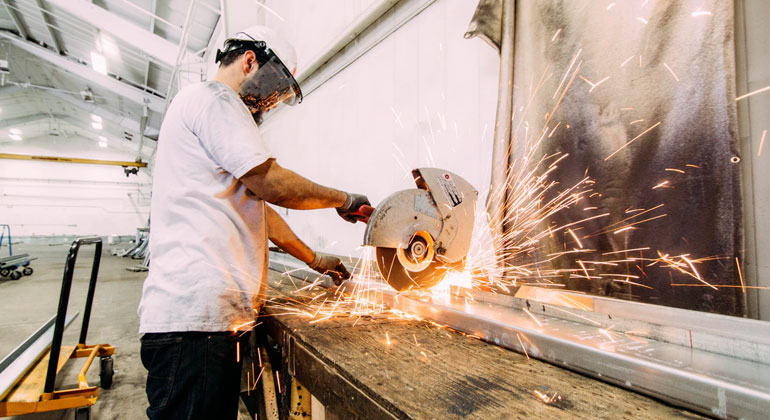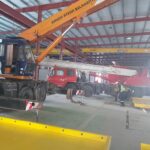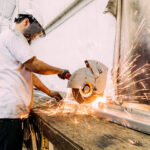Introduction: Metal fabrication, a cornerstone of modern industry, encompasses the intricate art and science of shaping and transforming raw metal into functional structures and components. From towering skyscrapers to intricate machinery, metal fabrication plays a pivotal role in constructing the foundations of our built environment. In this blog, we will explore the fascinating world of metal fabrication, its diverse applications, and the skills and techniques that bring metal to life.
- The Art of Metal Manipulation: Metal fabrication is an art form that requires skill, precision, and creativity. Fabricators possess the ability to envision and transform raw metal into complex shapes, structures, and designs. Through cutting, bending, welding, and shaping processes, metal fabricators turn sheets, rods, and tubes into functional and aesthetically pleasing components that form the backbone of various industries.
- Versatile Applications: Metal fabrication finds applications across a wide range of industries. From construction and architecture to automotive, aerospace, and manufacturing, metal fabricators are the driving force behind the creation of structural frameworks, machinery, equipment, and intricate parts. Their expertise ensures that the final products meet stringent quality standards, safety regulations, and performance requirements.
- Precision and Customization: Metal fabrication demands an unwavering commitment to precision and attention to detail. Fabricators meticulously follow blueprints, engineering drawings, and specifications to ensure accurate measurements, tight tolerances, and seamless assembly. Additionally, metal fabrication allows for customization, enabling fabricators to tailor designs and components to specific project requirements, thus offering versatility and flexibility to clients.
- Cutting-Edge Technologies and Equipment: The evolution of metal fabrication has been fueled by advancements in technology and equipment. Computer Numerical Control (CNC) machines, laser cutting, waterjet cutting, and robotic welding systems have revolutionized the industry, enhancing efficiency, accuracy, and production capacity. These technologies, coupled with skilled craftsmanship, have propelled metal fabrication to new heights, enabling the creation of intricate and complex structures.
- Collaboration and Problem Solving: Successful metal fabrication projects thrive on collaboration and effective problem-solving. Fabricators work closely with engineers, architects, and designers to ensure that the desired outcome is achieved. They navigate challenges, offer innovative solutions, and find ways to optimize designs, materials, and production processes. Through collaboration, metal fabricators bring ideas to life and overcome obstacles to deliver high-quality, functional, and visually appealing end products.
Conclusion: Metal fabrication is a testament to human ingenuity and craftsmanship, shaping the physical infrastructure that supports modern society. From iconic architectural landmarks to intricate machinery that powers industries, metal fabrication is the backbone of progress. With its versatile applications, precision, cutting-edge technologies, and collaborative nature, metal fabrication continues to push the boundaries of what is possible, opening doors to new possibilities and innovations. As we look to the future, the artistry and expertise of metal fabrication will remain instrumental in building a stronger, more advanced world.




